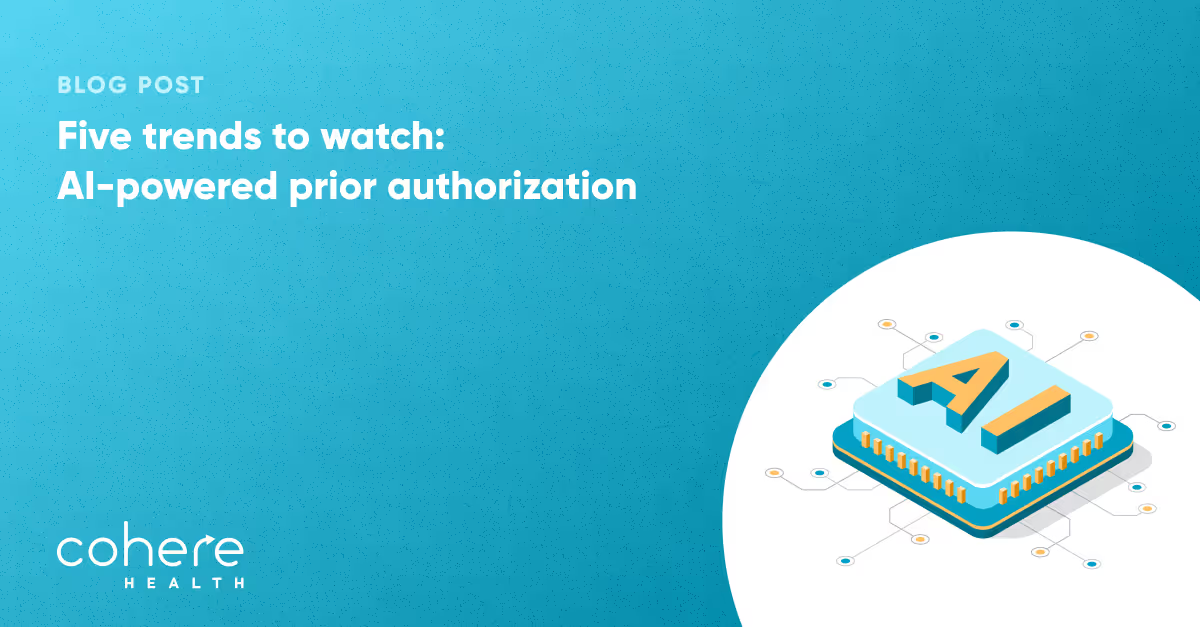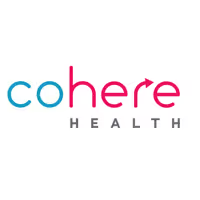/
Blog/
From AI hype to real outcomes: Lessons for prior authorization from the 2025 Gartner® ResearchFrom AI hype to real outcomes: Lessons for prior authorization from the 2025 Gartner® Research
Published:
July 16, 2025

Health plans have pursued prior authorization (PA) automation for years to improve efficiency. As AI and automation sweep healthcare, CIOs are pressured to lead major digital transformations. But with hype outpacing results in many cases, one challenge has become central: how do you measure and communicate real business value to stakeholders across the organization?
In the 2025 Gartner® research “U.S. Healthcare Payers: Overcome AI Hype by Using OKRs, ODMs and KPIs to Tell Your Stakeholder Value Story1,” analysts offer a practical answer: use a structured, stakeholder-focused framework to align technology initiatives with outcomes that matter. This isn’t just about justifying AI spend — it’s about making AI implementation successful.
What Gartner is saying—and why it matters
Technology success is stakeholder success
Gartner emphasizes that “to begin the stakeholder value process, you must identify your most important stakeholders from the five common categories: Funder, Society, Customer, Partner, Employee.”
Traditional IT metrics won’t cut it
Outcomes like reduced call volume, improved member experience, or fewer care denials matter more than uptime or data throughput. CIOs need to connect IT investments to business KPIs and real-world experience.
Measurement is a strategic capability
Gartner recommends using OKRs (Objectives and Key Results), ODMs (Outcome-Driven Metrics), and KPIs (Key Performance Indicators) to tell a credible, compelling story that resonates beyond IT.
“Rapid AI adoption calls on healthcare payer CIOs to deploy technologies that reshape business strategy — driving the need to partner with CxO and business peers.
— Gartner, “U.S. Healthcare Payers: Overcome AI Hype by Using OKRs, ODMs and KPIs to Tell Your Stakeholder Value Story”, May 2025
Why stakeholder alignment is essential
”Complex initiatives have numerous stakeholders, which poses risk aligning values and defining success and increases the need for stakeholder alignment. This is especially true in areas such as payment integrity and prior authorization where providers’ and payers’ goals seem to be misaligned.”
Gartner recommends reducing silos by partnering with business and operations leaders to create a stakeholder value model that represents business outcomes and benefits resulting from a technology initiative.” In most health plan organizations, prior authorization touches nearly every stakeholder group.
For example:
- Providers value faster, more precise determinations with fewer documentation requests.
- Members want timely access to care with minimal administrative friction.
- Payer operations teams need to reduce rework and status calls.
- Executives care about cost efficiency, compliance, and satisfaction.
CIOs who articulate these outcomes and tie them back to AI investments using OKRs, ODMs, and KPIs are better positioned to drive transformation and build lasting trust.

This graphic was published by Gartner, Inc. as part of a larger research document and should be evaluated in the context of the entire document. The Gartner document is available upon request from Cohere Health.
In PA, this might mean tracking not just turnaround time, but also:
- Reduced status check calls (call center ops)
- Fewer denials overturned on appeal (clinical)
- Fewer abandoned treatment plans (provider/member experience)
- Lower rates of shadow IT adoption (IT/InfoSec)
When stakeholder value is clearly defined and regularly measured, automation initiatives are more likely to gain buy-in, sustain momentum, and deliver outcomes that matter across the organization.
Telling a clear value story with OKRs, ODMs, and KPIs
The 2025 Gartner research emphasizes that technology success is stakeholder success, and that CIOs must connect automation and AI efforts to what each group values most. To do this, they recommend a layered framework of:
- OKRs: To align cross-functional teams around a shared goal and track progress.
- ODMs: To establish a direct line of sight between a technology initiative and the business outcomes it aims to influence.
- KPIs: To measure performance on specific tasks or processes within a department or function.
These frameworks aren’t just reporting tools—they help CIOs tell a credible, outcome-driven story that resonates across clinical, operational, and executive teams.

This graphic was published by Gartner, Inc. as part of a larger research document and should be evaluated in the context of the entire document. The Gartner document is available upon request from Cohere Health.
For example, in a prior authorization initiative:
- An OKR might be: Reduce provider abrasion from documentation requests by 30% in the next 2 quarters.
- An ODM could measure how NLP-assisted reviews reduce rework and care abandonment.
- A KPI might track the percentage of authorizations resolved without manual intervention.

Gartner stresses that leveraging the three “R’s” will maximize the value of the effort invested in these frameworks:
- Reach out: Communicated clearly across the organization
- Review: Regularly checked against shifting priorities or events
- Refresh: Updated to reflect new learnings, barriers, or breakthroughs
When used together, OKRs, ODMs, and KPIs help CIOs move beyond vague promises and prove how AI and automation drive meaningful, stakeholder-aligned change.
How Cohere delivers on this vision
The 2025 Gartner research challenges healthcare CIOs to move beyond vague AI promises — and instead use structured value frameworks to align technology investments with real business impact. Cohere’s Unify™ platform was built to meet that challenge head-on.
Cohere is designed to support multiple stakeholder groups across the enterprise — from clinical and operations teams to IT, finance, and provider relations. Rather than forcing a one-size-fits-all view of value, our platform surfaces the metrics each group cares about, whether auto-approval rates, inter-rater reliability, or time-to-decision.
Cohere also makes it easy for IT leaders to show not just what the platform does, but what it achieves:
- Stakeholders can track progress against shared OKRs in real time, reinforcing alignment and accountability.
- Cohere’s AI isn’t a black box—it’s a measurable, policy-aligned tool that enhances clinical transparency.
Our modular and standards-aligned architecture makes it easy to deploy quickly, scale gradually, and stay ahead of evolving regulations like the CMS Interoperability and Prior Authorization Final Rule. With a shared clinical intelligence engine underpinning it all, health plans can extend impact across use cases while keeping stakeholder value at the center.
Cohere’s take
At Cohere, we believe that automating for speed alone isn’t enough—you must automate for quality. That means surfacing clinical insight at the right time, not just pushing requests through a faster pipeline.
Whether you’re looking to accelerate utilization management, improve provider experience, or unlock prospective care management, Cohere offers the AI tools and partnerships to help you achieve your goals.
1Gartner, U.S. Healthcare Payers: Overcome AI Hype by Using OKRs, ODMs and KPIs to Tell Your Stakeholder Value Story, By Austynn Eubank, Connie Salgy, 3 April 2025
GARTNER is a registered trademark and service mark of Gartner, Inc. and/or its affiliates in the U.S. and internationally and is used herein with permission. All rights reserved.
Available For Download
Stay ahead with expert insights on transforming utilization management and payment integrity—delivered straight to your inbox.



